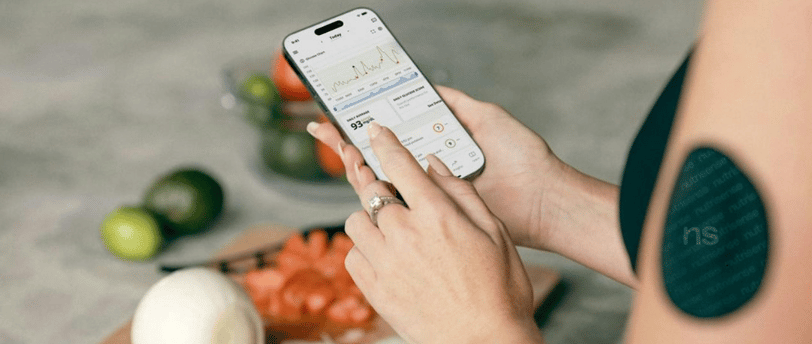The Dawn Phenomenon: Why Your Morning Blood Sugar Is High (And How to Fix It)
Waking up to high blood sugar? Discover why the Dawn Phenomenon causes morning spikes & get actionable tips to lower blood sugar naturally. Learn how to manage it with diet, exercise, and lifestyle changes to reclaim your mornings.
6/17/20255 min read


The Dawn Phenomenon: Why Your Morning Blood Sugar Is High (And How to Fix It)
Ever woken up, pricked your finger, and been shocked to see your blood sugar is higher than when you went to bed? You haven't eaten all night, so what gives? If you're scratching your head, you're not alone. This mysterious morning rise in blood sugar is incredibly common, especially for people with diabetes. It's called the "Dawn Phenomenon," and it's a real puzzle for many.
But fear not! Today, we're going to pull back the curtain on this perplexing issue. We'll explore what causes it, who it affects, and most importantly, practical strategies you can implement today to take back control of your morning numbers. No more guessing games, just actionable advice.
Ready to demystify your mornings? Let's dive in!
What Exactly Is the Dawn Phenomenon?
Simply put, the Dawn Phenomenon is the natural rise in blood sugar that occurs in the early morning hours, typically between 2 AM and 8 AM. It's not about what you ate for dinner last night or that late-night snack you definitely shouldn't have had. This is your body's internal alarm clock, a physiological process designed to get you ready for the day.
Think about it: as dawn approaches, your body needs to gear up for activity. It anticipates you'll be getting out of bed, moving around, and needing energy. To prepare for this, your body releases a cocktail of hormones:
Growth hormone: Crucial for cell growth and repair, but also affects glucose metabolism.
Cortisol: The "stress hormone," but also essential for regulating blood sugar and energy levels.
Glucagon: A hormone that tells your liver to release stored glucose.
Epinephrine (adrenaline): Prepares your body for "fight or flight" but also plays a role in glucose release.
These hormones are like an internal wake-up call, instructing your liver to produce more glucose and release it into your bloodstream. For people without diabetes, their pancreas responds by releasing enough insulin to counteract this rise, keeping blood sugar levels stable.
However, if you have diabetes, your body either doesn't produce enough insulin or doesn't use it effectively (insulin resistance). This means that when those morning hormones kick in, there isn't enough insulin to bring the glucose back down, leading to elevated blood sugar readings.
Who Gets Hit By the Dawn Phenomenon?
While it can affect anyone, the Dawn Phenomenon is most prevalent in individuals with:
Type 1 Diabetes: Their pancreas produces little to no insulin.
Type 2 Diabetes: They often experience insulin resistance and/or insufficient insulin production.
Prediabetes: Even at this stage, the body might struggle to keep up with the morning glucose surge.
It's also worth noting that the severity can vary from person to person and even from day to day. Factors like sleep quality, stress levels, and even your dinner the previous night can subtly influence how pronounced the Dawn Phenomenon is for you.
Dawn Phenomenon vs. Somogyi Effect: A Quick Distinction
Before we jump into solutions, it's important to briefly touch on another potential cause of high morning blood sugar: the Somogyi Effect (also known as rebound hyperglycemia).
The Somogyi Effect is essentially the opposite of the Dawn Phenomenon. It happens when your blood sugar drops too low in the middle of the night (often due to too much insulin or certain medications, or not eating enough). In response to this low, your body's counter-regulatory hormones (the same ones involved in the Dawn Phenomenon) kick in to raise your blood sugar. But they can overcompensate, leading to high readings by morning.
How do you tell the difference? The key is checking your blood sugar in the middle of the night (e.g., between 2 AM and 3 AM).
If your blood sugar is low or normal in the middle of the night, and then high in the morning, it's likely the Dawn Phenomenon.
If your blood sugar is low in the middle of the night, and then high in the morning, it's likely the Somogyi Effect.
Knowing the difference is crucial because the solutions are different. For the Somogyi Effect, you might need to reduce evening insulin or adjust your dinner. For the Dawn Phenomenon, the strategies we're about to discuss are more appropriate. Always consult your doctor for a definitive diagnosis and personalized advice.
How to Tame the Morning Beast: Actionable Strategies
Alright, enough with the explanations! You want to know how to fix this, right? Here are some practical, evidence-based strategies you can start implementing to gain better control over your morning blood sugar:
1. Timing is Everything: Adjusting Medications and Insulin
This is often the most impactful strategy, but it must be done in consultation with your doctor.
Insulin Adjustments: If you take insulin, your doctor might recommend adjusting the timing or dosage of your evening long-acting insulin. Sometimes, a slightly later injection can help cover the dawn hours more effectively. For rapid-acting insulin, an early morning dose might be needed.
Oral Medications: Certain oral diabetes medications, like sulfonylureas or GLP-1 receptor agonists, can also be adjusted to better manage morning glucose. Your doctor will assess your current regimen and make recommendations.
2. Optimize Your Evening Meal
What you eat for dinner, and when, can definitely influence your morning numbers.
Earlier Dinner: Try to eat dinner earlier in the evening, giving your body more time to process the food before those morning hormones kick in.
Limit Carbs at Dinner: Reducing your carbohydrate intake, especially refined carbs, at dinner can help prevent a significant blood sugar spike that might then be exacerbated by the Dawn Phenomenon. Focus on lean protein, healthy fats, and non-starchy vegetables.
Fiber Power: Incorporate plenty of fiber-rich foods (vegetables, legumes) into your dinner. Fiber slows down glucose absorption, leading to a more gradual rise in blood sugar.
3. Embrace Evening Exercise
While intense exercise right before bed might interfere with sleep, moderate evening activity can be incredibly beneficial.
Post-Dinner Walk: A brisk 20-30 minute walk after dinner can significantly help lower post-meal blood sugar and improve insulin sensitivity overnight.
Light Strength Training: A short session of bodyweight exercises (squats, push-ups) can also help your muscles absorb glucose more effectively.
4. The Power of Consistency: Sleep and Stress Management
You'd be surprised how much these factors impact blood sugar.
Prioritize Sleep: Irregular sleep patterns and sleep deprivation can wreak havoc on hormone regulation, including those involved in the Dawn Phenomenon. Aim for 7-9 hours of quality sleep per night.
Manage Stress: Chronic stress leads to elevated cortisol levels, which directly contributes to higher blood sugar. Incorporate stress-reducing activities like meditation, yoga, deep breathing exercises, or hobbies you enjoy.
5. Consider a Small Bedtime Snack (Carefully!)
This might seem counterintuitive, but for some individuals (especially those prone to nocturnal hypoglycemia, not the Dawn Phenomenon), a small, balanced bedtime snack might actually help stabilize blood sugar overnight. If your blood sugar tends to drop during the night, this could prevent the rebound effect. However, if you have the true Dawn Phenomenon, this is unlikely to be helpful and could even make it worse. Always discuss this with your healthcare provider.
6. Continuous Glucose Monitoring (CGM)
If you're really struggling to pinpoint the cause and pattern of your morning highs, a CGM can be a game-changer. It provides real-time blood sugar readings throughout the day and night, allowing you and your doctor to identify precise trends and patterns, including the exact timing and severity of your Dawn Phenomenon. This data is invaluable for fine-tuning your management plan.
Don't Go It Alone: Work With Your Healthcare Team
The most important takeaway here is this: Do not attempt to make significant changes to your medication or insulin dosages without consulting your doctor or endocrinologist. They are your best resource for diagnosing the exact cause of your high morning blood sugar and developing a personalized management plan.
Bring your blood sugar logs (or CGM data) to your appointments. The more information you can provide, the better equipped your healthcare team will be to help you.
Reclaim Your Mornings!
The Dawn Phenomenon can be frustrating, but it's a manageable challenge. By understanding its causes and implementing these practical strategies in collaboration with your healthcare provider, you can gain better control over your morning blood sugar levels.
Imagine waking up to numbers that empower you, not disappoint you. That's the goal. Take these steps, be consistent, and you'll be well on your way to brighter, healthier mornings.
What are your experiences with the Dawn Phenomenon? Share your tips and questions in the comments below!
